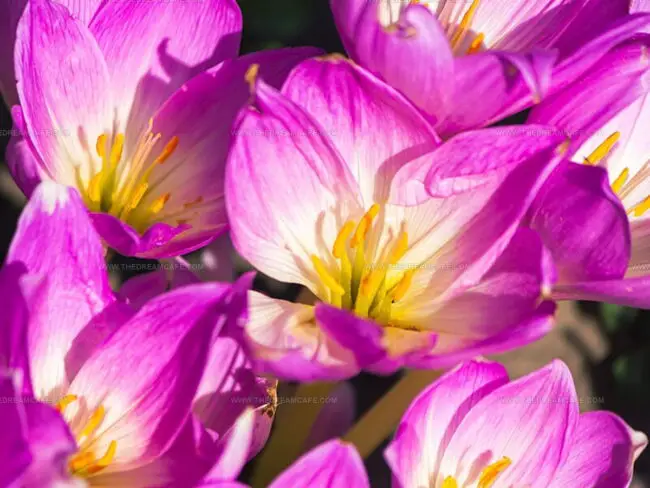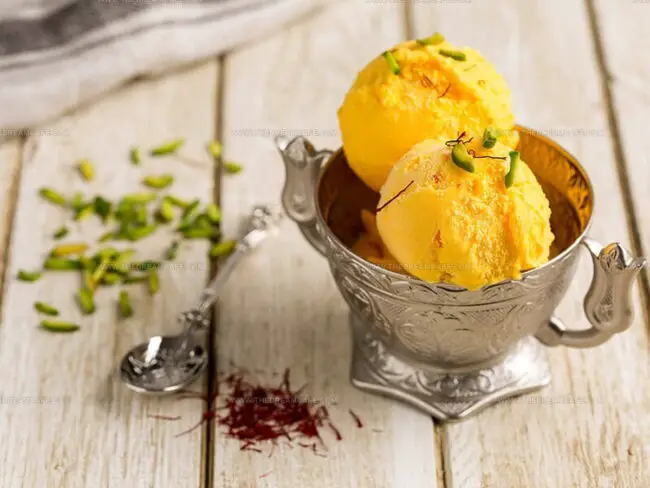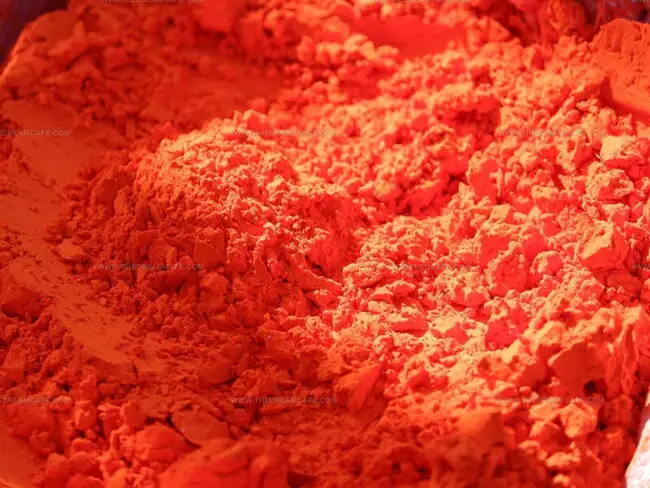What Does Saffron Taste Like? A Golden Journey for Your Taste Buds
Saffron, the world's most expensive spice, has intrigued culinary enthusiasts for centuries with its mysterious flavor profile.
Delicate threads of deep crimson color signal its rare and precious nature, harvested meticulously by hand from crocus flowers.
Ancient cultures prized this golden-hued seasoning for more than just its culinary applications.
Chefs and home cooks alike marvel at its complex sensory experience that transforms ordinary dishes into extraordinary culinary adventures.
Sophisticated palates recognize saffron as more than a simple ingredient - it represents a rich cultural and gastronomic heritage.
Its nuanced characteristics have sparked countless conversations among food lovers seeking to understand its unique essence.
This spice carries stories from Persian gardens to Spanish kitchens, promising a sensory journey that goes far beyond mere taste.
Dive into the fascinating world of saffron and uncover the secrets behind its legendary status.
Does Saffron Lean Sweet or Bitter?
Saffron carries a complicated flavor with hints of sweetness and flower-like notes. Mixing this spice with certain dishes creates interesting taste experiences. Saffron works well in multiple popular recipes such as:
Cooks often use saffron as a replacement for turmeric or other seasonings. People recognize four distinct saffron varieties, each with unique qualities. Spice lovers find its complex profile quite fascinating.
Important Saffron Facts
Saffron stands out as a special spice pulled from Crocus sativus flowers. Red threads make up this delicate spice.
Workers carefully pick flower stigmas and dry them before sending to markets.
People in Asian countries like China and India use saffron beyond cooking.
Textile makers add it to cloth colors. Cosmetic companies also include this spice in their product lines.
High demand and complex harvest methods make saffron extremely costly. Chefs and home cooks across different regions enjoy using this unique seasoning.
Saffron's true birthplace sparks many debates among historians. Iran seems like a strong candidate for its first production.
Some scholars point to Greece and Mesopotamia as possible original sources of this precious spice.
Four Types Of Saffron To Know
Saffron comes in four main types that every food lover should understand. Each type has its own special qualities and looks different from the others.
Let me break down what makes Sargol, Super Negin, Negin, and Pushal unique.
Sargol Type Saffron
Sargol saffron stands out with its top-notch quality and deep red hue among four different types. Harvesters carefully collect only the dark red stigma tips to create this special spice.
Powerful flavor and rich color make Sargol saffron unique in the spice world. Because of its pure and intense characteristics, this particular saffron comes with a higher price tag compared to other varieties.
Super Negin Saffron Kind
Saffron shoppers seeking top-notch quality should look at Super Negin. People buy this type of saffron because of its special characteristics.
Super Negin has a milder taste compared to Sargol. Its color remains completely red and comes in a medium length, shorter than standard Negin.
Negin Saffron Variety
Saffron threads of Negin carry warm orange and yellow colors while maintaining a distinct scent and exceptional standard.
Making Negin saffron demands careful skill and detailed work. Consequently, Negin stands out as a rare and costly saffron variety that cannot be easily created.
Pushal Saffron Type
Shoppers looking for saffron will quickly notice Pushal or Poshal varieties in stores. Pushal sells at a lower cost because it includes yellow and orange threads.
These extra parts make Pushal saffron less valuable compared to Sargol, Super Negin, and Negin types.
Why Saffron’s Flavor Is Special
Saffron carries a complex taste that people describe differently. Some say it hints at honeydew with earthy and hay-like notes. Other people believe saffron can seem slightly sweet or sometimes carry a bitter edge.
Personal experience suggests saffron's flavor shifts based on emotional context. Its taste stands out as unmistakable and strong. Finding a similar flavor would challenge even experienced food lovers.
Small amounts of saffron can elevate simple meals to restaurant-quality experiences. Different dishes showcase saffron's unique flavor characteristics in surprising ways.
Risotto
Saffron brings out rich smells in risotto. Cooks love adding this special spice to make risotto taste amazing for Swiss guests.
White wine replaces water and helps boost the dish's deep flavor.
No need to stress about how risotto feels.
Saffron keeps the smooth, creamy texture just right.
Pudding
Spice lovers know saffron adds magic to sweet treats like pudding. Its flavor brings a special touch that makes desserts sparkle.
Readers curious about making this delightful saffron pudding should keep reading for simple steps and tasty details.
Ice Cream
Saffron works magic with ice cream. Sweet and gentle, this pairing brings out unique tastes.
My personal experience reveals the flavor feels like honey mixed with fresh grass notes.
Paella
Saffron costs a lot of money, but cooks keep using it in paella. Small amounts of this special spice can make food taste better and look more golden.
Bouillabaisse
Bouillabaisse lacks perfection without saffron. Chefs whisper that this spice holds magical powers to enhance flavor and create an amazing smell.
Saffron works magic with countless dishes across sweet and savory spectrums. Scandinavian desserts showcase saffron's incredible potential.
Smart cooks understand adding this spice early helps its flavor spread completely through their recipe.
People worried about saffron's bitter taste can solve this problem simply.
Pressing threads between aluminum sheets helps manage its strong flavor, making it more pleasant for cooking.
Storing Saffron Without Waste
Saffron stands out from other spices because it doesn't spoil quickly. However, its unique flavor and smell will fade over time. Protecting this precious spice matters!
Keeping saffron safe requires blocking light and moisture. Store it in a sealed container inside a cool, dark spot like your pantry.
When freezing saffron, wrap it carefully in aluminum foil before placing it in a sealed bag or container. Remember these storage tips to preserve its quality:
Spotting Real Saffron Easily
Money spent on costly items deserves top-notch quality. Saffron purchases follow this same principle.
People wondering about saffron authenticity can easily check product quality through 5 simple tests.
Saffron’s Rich Color
Saffron color quickly reveals its quality and purity. Pure saffron shows a deep red shade as a strong indicator of good sourcing.
Some orange and yellow edges do not reduce its overall value. Weak saffron looks pale with jagged threads that seem worn or broken.
Rinse With Cold Water
Red dye from fake saffron breaks down fast in water while other colors spread like tea.
Check saffron at home by dropping threads in cold water for 10 to 15 minutes and watching closely.
Pure saffron keeps its red color steady, but fake versions release color quickly.
Gently Rub Saffron By Hand
Water helps you test saffron's quality. Rub threads between hands after soaking them.
Fake saffron breaks quickly when touched. True saffron stays strong and leaves colored marks on skin.
Original threads remain whole and solid when checked this way.
Saffron’s Flavor And Smell
Here's how you can spot real saffron. Pure saffron gives off a natural flower-like smell and tastes mild with soft floral or slight bitter notes.
Fake saffron lacks any fragrance and carries a harsh metallic flavor when you sample it.
Test Saffron With Baking Soda
You can see what happens when saffron meets baking soda. Mix saffron with baking soda in a bowl.
Add some water drops to the mix. Pure saffron will change to yellow.
What Ground Saffron Can Do
Ground saffron brings magic to meals with its special touch. Persian cooking deeply values this unique seasoning. Saffron adds beautiful color and unexpected flavor to dishes.
Making ground saffron at home helps you control quality. Store-bought versions work, but homemade offers pure results. Creating this spice blend isn't complicated - you can do it easily!
Things You’ll Need
Ingredients:You can skip salt in this process. Sugar works better as an abrasive and won't make the spice too salty during cooking.
Step 1: Place saffron threads in the mortar.
Step 2: Grind the saffron with the pestle until threads break down.
Step 3: Sprinkle a small amount of sugar into the mortar.
Step 4: Keep grinding the mixture until you reach the right texture.
Health Benefits of Fancy Saffron
Saffron packs powerful health perks and skin benefits. Health experts praise this expensive spice for its incredible qualities.
People often wonder about its magic powers, and medical research supports many remarkable claims.
Saffron’s Health Boosts
Experts say adding saffron to your routine can be good for your health in several ways:
Saffron’s Role In Beauty
You need natural solutions for skin issues right now! Saffron stands as the priciest spice worldwide.
Bring Bold Flavor With Saffron
Cooking becomes simple when you know smart tricks. Spicing up meals helps solve dinnertime stress quickly.
Saffron works magic in your cooking bowl. Your dishes turn more delicious and fancy with just this one seasoning.
Saffron Rice Pudding (Sholeh Zard)
Saffron rice pudding shines as a beloved sweet treat born in Texas. Its golden color and delicate scent of saffron and rose water make people fall in love at first sight.
Hints of savory notes dance with smooth, creamy textures from rich butter. Warmth fills each spoonful, making this dessert perfect for chilly moments when you want comfort on cold days.
Tomato Risotto
Tomato risotto shines as a delightful meal you can savor in any season, perfect for tomato enthusiasts.
Side dishes like grilled meats complement this plate nicely.
Health-conscious people appreciate its vegetarian-friendly profile. Saffron brings an extra layer of rich taste to the risotto, making each bite more satisfying.
Seared Cod With Saffron Rice
Main dishes play a key role in making meals satisfying. Here is a simple recipe for cod with saffron rice.
People who know or don't know how to cook seared cod can enjoy this dish. Saffron makes rice taste special.
Cod works well with this recipe, but mussels or other seafoods can also pair nicely. Saffron brings beautiful color to your meal.
Creamy Tuscan Chicken
Keto dieters won't want to skip creamy Tuscan chicken. This meal becomes a quick favorite after one bite.
Making this dish takes roughly 30 minutes for a complete meal.
My go-to choice involves chicken breast covered in smooth sauce.
Chicken thighs work well when breast meat isn't available. Saffron adds wonderful color and taste, so never skip this ingredient.
Creamy Fish and Shrimp Casserole
Seafood mixed with saffron creates a delightful surprise. Flavors blend perfectly together.
Cheese helps make this fish and shrimp casserole super creamy. My secret is adding lots of Parmesan during cooking.
Sprinkle a small amount of saffron to bring out new taste sensations in your meal.
Saffron Taste and FAQ Breakdown
1. Why is saffron so expensive?
Saffron costs a lot because harvesting it is very hard work. Each strand comes from a tiny flower, and thousands of flowers are picked by hand to get just a small amount. After picking, the flowers are dried, which makes the amount even smaller.
2. Can you use something else instead of saffron?
There isn’t a perfect substitute for saffron’s special flavor and color. Some cooks use turmeric for a similar yellow color, but the taste is quite different.
3. Is it safe to eat saffron while pregnant?
In small amounts, saffron is generally safe for pregnant women. It’s sometimes used to flavor food or tea, but always check with your doctor before adding new spices to your diet when pregnant.
4. Does saffron cause any side effects?
Most people can enjoy saffron with no problem, but a few may get mild side effects, such as headaches or an upset stomach. If this happens, just stop using it.
5. What’s the best way to use saffron in cooking?
The easiest way is to soak a few saffron threads in warm water or milk, then add the liquid to your dish. This brings out the flavor and color.
6. Is safflower the same as saffron?
No, safflower and saffron are different. Saffron has a stronger flavor and is much more expensive. Safflower is often used as an oil for cooking and isn’t used in the same way as saffron.
7. Can I make saffron tea at home?
Yes! Just steep a few saffron threads in hot water. The flavor is bold and earthy. Some people add honey or other herbs to make it a bit sweeter.
8. How do you store saffron to keep it fresh?
Keep saffron in an airtight container in a cool, dark place. This helps it keep its color and taste for as long as possible.
Wish I Knew This About Saffron Sooner
Saffron carries deep secrets and special qualities that make it a fascinating spice. Tastes dance with complexity, revealing subtle notes that surprise food lovers.
Home cooks can now use saffron as a delightful ingredient for dinner. My recommendations might spark your cooking creativity. Please share your personal saffron stories and kitchen adventures with me!



